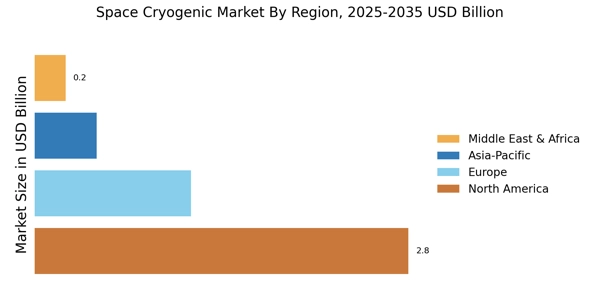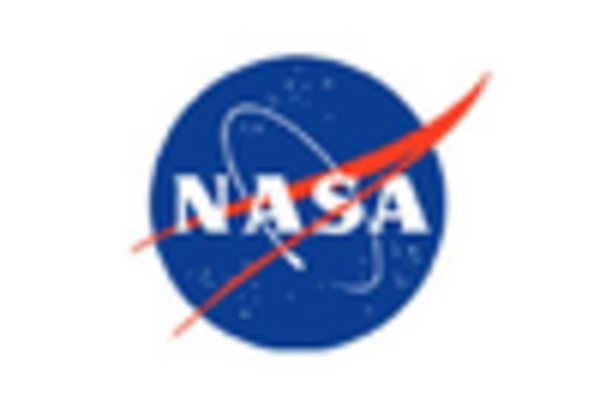Rising Demand for Liquid Propellants
The Space Cryogenic Market is significantly influenced by the rising demand for liquid propellants in space missions. Liquid hydrogen and liquid oxygen, which are essential components of cryogenic propellants, are increasingly being utilized in launch vehicles and spacecraft. The shift towards reusable launch systems, such as SpaceX's Falcon 9, has further amplified the need for efficient cryogenic storage solutions. As the aerospace sector continues to innovate, the requirement for high-performance cryogenic propellants is expected to grow. Market analysts predict that the demand for liquid propellants will increase by approximately 15% over the next five years, thereby driving the expansion of the Space Cryogenic Market. This trend underscores the critical role that cryogenic technologies play in ensuring the success of modern space missions.
Focus on Sustainable Space Technologies
The Space Cryogenic Market is increasingly aligning with the global focus on sustainability and environmental responsibility. As space agencies and private companies strive to reduce their carbon footprints, there is a growing emphasis on developing eco-friendly cryogenic solutions. Innovations such as green propellants and energy-efficient cryogenic systems are being explored to minimize environmental impact. Furthermore, the integration of renewable energy sources in cryogenic operations is gaining traction, potentially leading to a more sustainable approach to space exploration. This shift not only addresses environmental concerns but also enhances the public perception of space activities. As sustainability becomes a priority, the Space Cryogenic Market is likely to adapt and evolve, fostering new opportunities for growth.
Expansion of International Collaborations
The Space Cryogenic Market is benefiting from the expansion of international collaborations in space research and exploration. Countries are increasingly recognizing the value of joint ventures and partnerships to share knowledge, resources, and technologies. Collaborative projects, such as the International Space Station (ISS), have demonstrated the effectiveness of pooling expertise in cryogenic systems. These partnerships often lead to the development of standardized cryogenic technologies that can be utilized across various missions. As nations work together to tackle complex challenges in space exploration, the demand for advanced cryogenic solutions is expected to rise. This collaborative approach not only enhances the capabilities of the Space Cryogenic Market but also fosters innovation and accelerates the pace of technological advancements.
Increasing Investment in Space Exploration
The Space Cryogenic Market is poised for growth due to the increasing investment in space exploration initiatives by both governmental and private entities. Countries are allocating substantial budgets for space missions, with a focus on deep space exploration and potential colonization of other planets. For example, NASA's Artemis program aims to return humans to the Moon, necessitating advanced cryogenic technologies for fuel storage and propulsion systems. Additionally, private companies are entering the space race, further fueling demand for cryogenic solutions. The market is projected to witness a compound annual growth rate (CAGR) of over 10% in the coming years, driven by these investments. This influx of capital is expected to enhance research and development efforts, thereby propelling advancements in the Space Cryogenic Market.
Technological Innovations in Cryogenic Storage
The Space Cryogenic Market is experiencing a surge in technological innovations that enhance the efficiency and reliability of cryogenic storage systems. Advanced materials and insulation techniques are being developed to minimize heat transfer, thereby improving the performance of cryogenic tanks. For instance, the introduction of vacuum-insulated tanks has shown to reduce boil-off rates significantly, which is crucial for long-duration space missions. Furthermore, automation and smart monitoring systems are being integrated into cryogenic facilities, allowing for real-time data analysis and predictive maintenance. This not only optimizes operational efficiency but also reduces costs associated with cryogenic storage. As these technologies evolve, they are likely to attract investments and drive growth within the Space Cryogenic Market.


















Leave a Comment